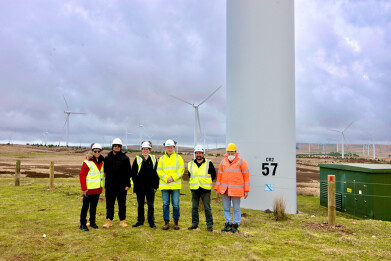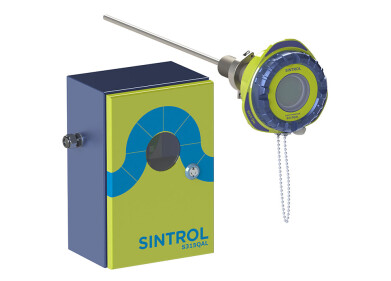Air monitoring
New project gives an insight into the future role of sensor technology for use in wind turbine maintenance and condition monitoring
Oct 02 2024
Wind turbines currently contribute around 30% of the UK’s electricity generation. Timely and efficient maintenance is vital for wind turbines to ensure they operate efficiently and avoid costly repairs and downtime. An efficient maintenance program will provide the operator with a clear understanding of the dynamic behaviour and enable them to establish a baseline performance to detect the early onset of failure of rotating parts. If machinery is left unchecked, there will consistently be increased potential for more severe damage and disruption.
Sensonics are consistently developing new advancements in wind turbine blade health monitoring. The company’s collaborations with some of the major players in wind turbine projects highlight its contribution to ensuring these giants of green energy continue to spin cleanly and efficiently. The latest example of these collaborations is their recent project at the Crystal Rig ll Wind Farm, which boasts an installed capacity of 138 MW, in Scotland working with Natural Power and the University of Huddersfield.
The UK government-funded project investigating blade health monitoring at the Scottish wind farm offers considerable promise for the wind energy sector. By combining the latest sensor technology, university expertise and real-world data collection, this project may revolutionise how wind turbines are maintained. The visit to the wind farm allowed the project team to see the 2.3 MW Siemens turbines in action and discuss the optimal monitoring policies with the site personnel.
Turbine 57 at the Crystal Rig ll site was fitted with Sensonics’ sensing and data technology to develop a database of measured performance data across various blade conditions.
The project's main objective is to provide turbine operators with ‘live’ blade data health by solely monitoring the main bearing and processing the data via specialised algorithms developed by the University of Huddersfield and machine learning techniques.
The project significantly improved the early detection of blade issues. Discovering blade deterioration early lowers repair costs and improves turbine uptime, delivering substantial financial benefits for wind farm operators. This will also improve operational efficiency; real-time blade health data allows for optimised maintenance schedules, minimising downtime and maximising energy production.
A proactive blade maintenance program can extend wind turbines’ lifespan, delaying expensive replacements and improving return on investment. Focusing on non-rotating parts for sensor placements simplifies installation and reduces maintenance complexity.
The Crystal Rig ll project highlights the benefits of collaboration between industry leaders such as Natural Power, academic institutions like the University of Huddersfield and sensor specialists like Sensonics. By bringing together this array of expertise and resources, the Crystal Rig II project is setting up new advancements in wind turbine health monitoring, representing a significant step towards a future of more predictive and efficient wind turbine maintenance.
Digital Edition
AET Guide 2025
March 2025
Buyer's Guide Directory - Product Listings by Category - Suppliers Listings (A-Z) Air Monitoring - Stack Emissions Multi-Gas Analysis: OFCEAS<sup>®</sup> Technology Seduces the Market...
View all digital editions
Events
Mar 18 2025 Expo Santa Fe, Mexico
Mar 18 2025 Moscow, Russia
Mar 19 2025 Manila, Philippines
Mar 19 2025 New Delhi, India
Mar 20 2025 Guangzhou, China











.jpg)







